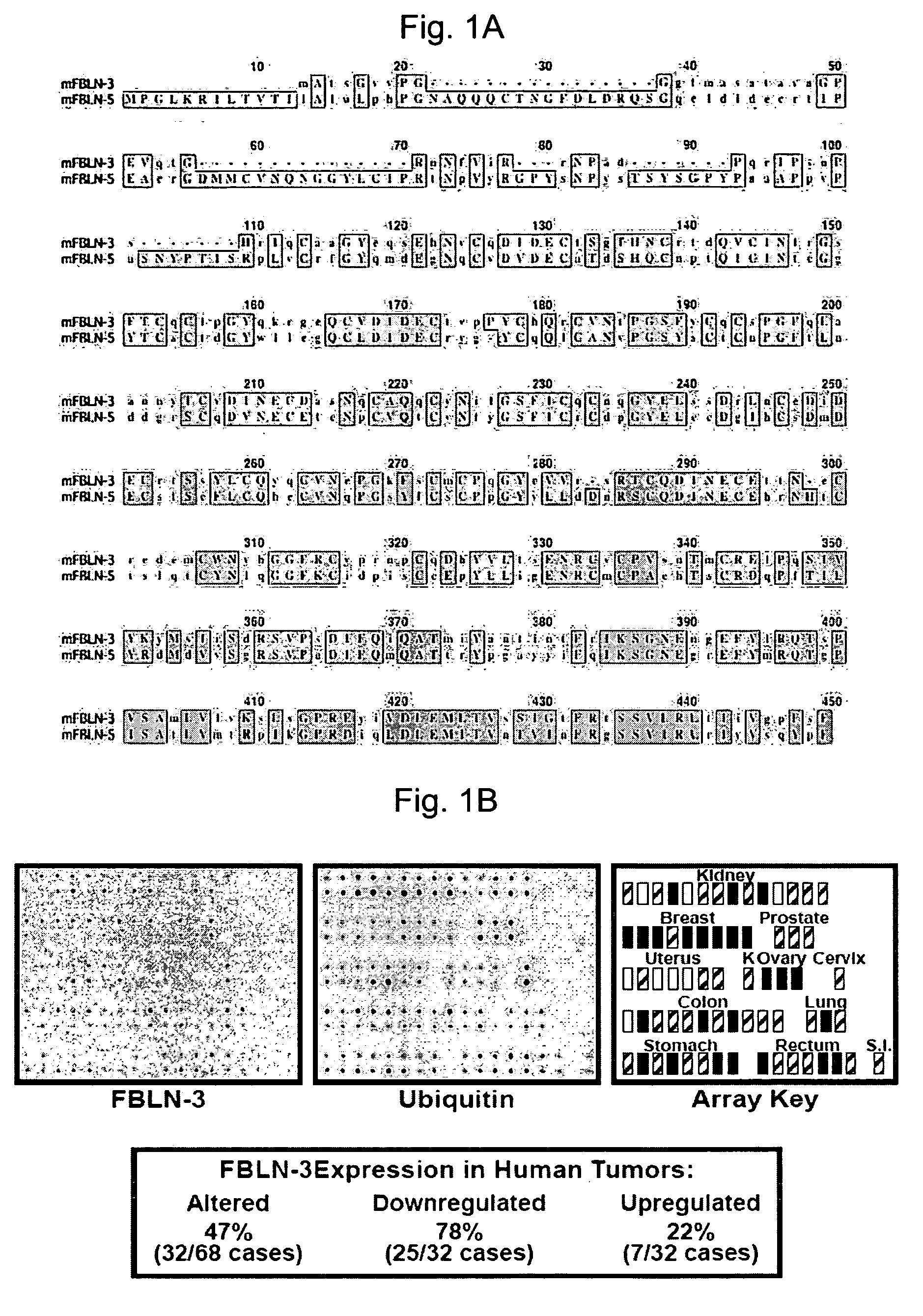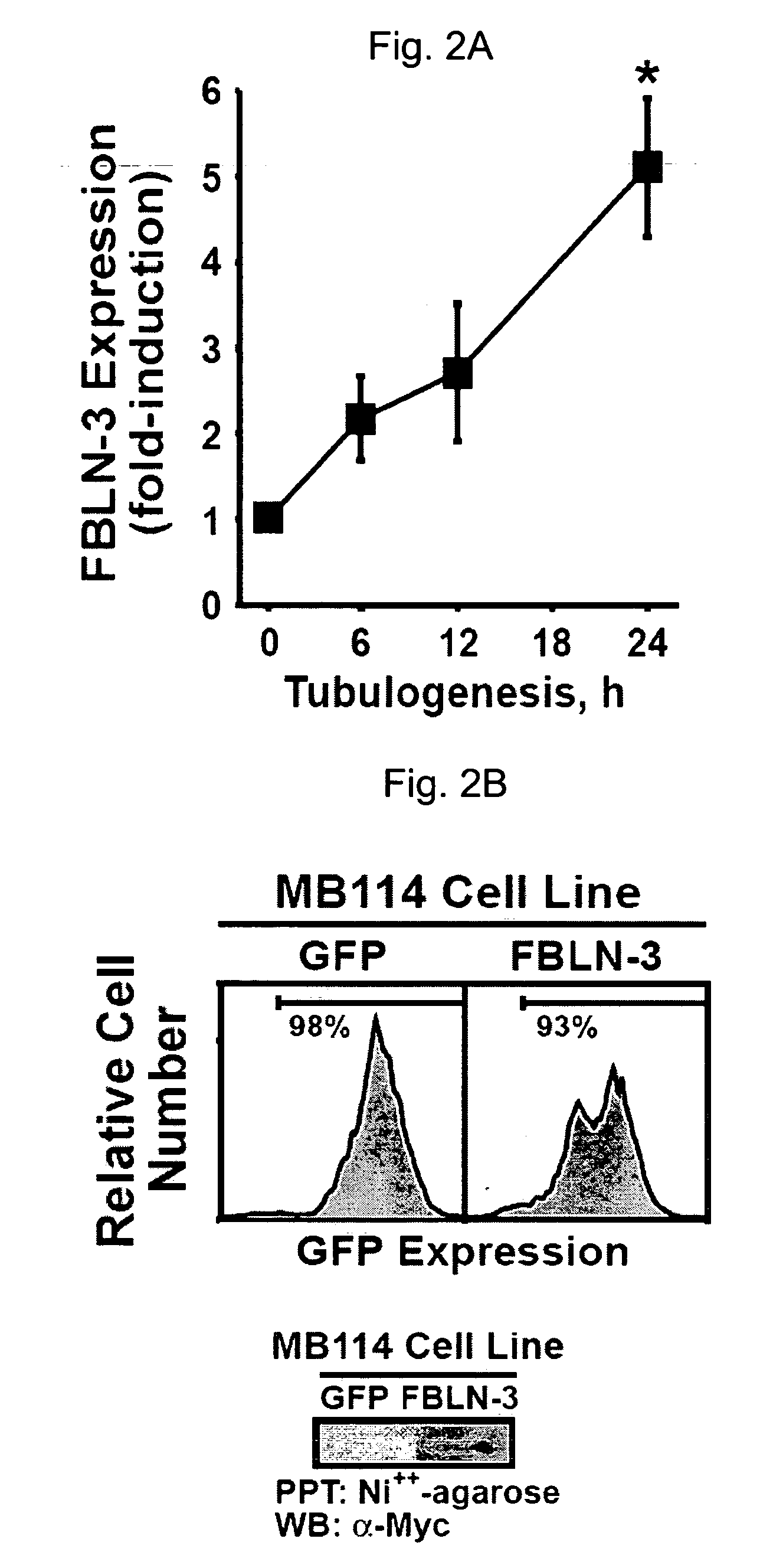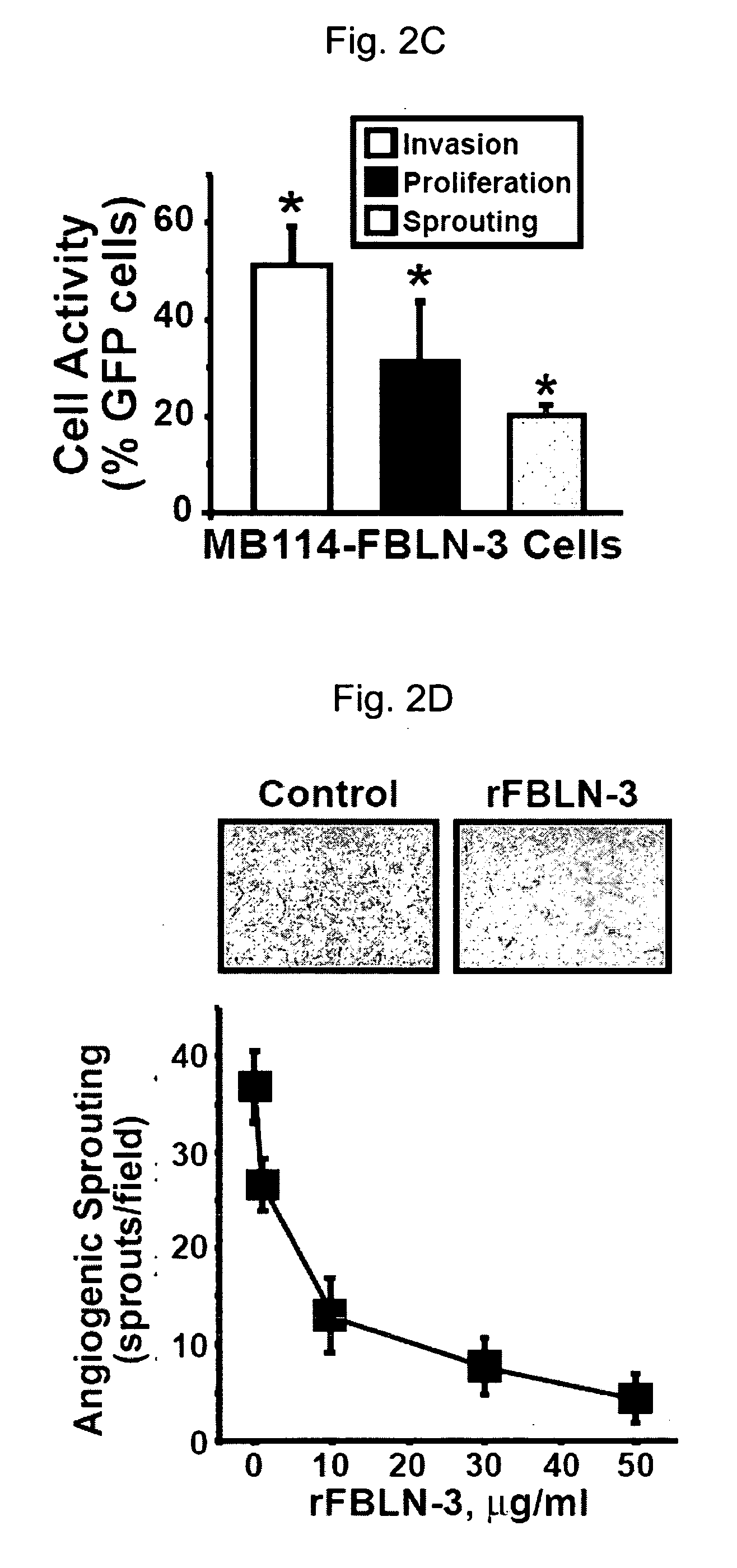Fibulin-3 and uses thereof
a technology of fibulin and fbln, which is applied in the field of use of fibulin, can solve the problems of severe hampering the growth and progression of small, harmless neoplasms, and achieve the effects of reducing the expression or activity of long fbln-3, promoting angiogenesis, and increasing expression or activity
- Summary
- Abstract
- Description
- Claims
- Application Information
AI Technical Summary
Benefits of technology
Problems solved by technology
Method used
Image
Examples
example 1
[0204] The following example shows that FBLN-3 is homologous to FBLN-5 and is expressed aberrantly during tumorigenesis.
[0205] Murine FBLN-3 (short form) is 48% identical to murine FBLN-5 (FIG. 1A), and like FBLN-5 (Schiemann et al., 2002; Nakamura et al., 1999; Kowal et al., 1999), is widely expressed throughout mammalian tissues (FIG. 1B; Ikegawa et al., 1996; Giltay et al., 1999) and regulates cell proliferation in a context-specific manner (Lecka-Czernik et al., 1995). FIG. 1B shows phosphor images visualized using radiolabeled cDNA probes corresponding to either murine FBLN-3 (left panel) or human ubiquitin (middle panel) that were hybridized to a matched human normal:tumor cDNA array. FIG. 1B shows FBLN-3 and ubiquitin expression in paired normal (upper spot) and malignant (bottom spot) tissues. FBLN-3 expression was normalized to that of ubiquitin, followed by a determination of tumor:normal tissue FBLN-3 expression ratios. Ratios ≧2 or≦0.5 were considered significant. Tumor...
example 2
[0207] The following example demonstrates that short FBLN-3 antagonizes angiogenic activities and sprouting in endothelial cells.
[0208] Because tumorigenesis downregulates the expression of FBLNs 3 and 5 (see above), and because these ECM proteins have similar structures and expression profiles, the present inventors hypothesized that FBLN-3 may be functionally similar with FBLN-5 in mediating anti-angiogenic activities. Tubulating MB114 cells were incubated in collagen matrices for varying times as indicated in FIG. 2A. Total RNA was isolated and used to measure FBLN-3 expression by quantitative real-time PCR. The resulting GFP expression profiles in MB114 cells infected with control (FIG. 2B; left panel) or FBLN-3- (FIG. 2B; right panel) retroviruses were also evaluated. In these experiments, conditioned-media from control- and FBLN-3-expressing MB114 cells was tumbled with Ni++-agarose and captured protein complexes were immunoblotted with anti-Myc antibodies to visualize recomb...
example 3
[0211] The following examples shows altered endothelial cell expression of MMPs, TIMPs, and TSP-1 by FBLNs 3 (short form) and 5.
[0212] The inhibition of endothelial cell invasion and angiogenic sprouting by FBLNs 3 and 5 implicated these proteins as potential regulators of the expression and activity of ECM proteases, particularly MMPs and their inhibitors, the TIMPs. The present inventors tested this hypothesis by performing semi-quantitative real-time PCR analyses on total RNA isolated from control-, FBLN-3-, and FBLN-5-expressing MB114 cells. Briefly, total RNA isolated from resting FBLN-5 (FIG. 3A; filled bars)- and FBLN-3 (FIG. 3A; open bars)-expressing MB114 cells was reverse transcribed prior to analyzing the expression of MMP-2, MMP-3, TIMP-1, TIMP-2, TIMP-3, and TSP-1 by quantitative real-time PCR (data are the mean±SE (n=3)). FIG. 3A shows that relative to control cells, FBLNs 3 and 5 both decreased MB114 cell expression of MMP-2 and MMP-3, while simultaneously increasing...
PUM
| Property | Measurement | Unit |
|---|---|---|
| concentrations | aaaaa | aaaaa |
| molecular mass | aaaaa | aaaaa |
| molecular mass | aaaaa | aaaaa |
Abstract
Description
Claims
Application Information
 Login to View More
Login to View More - R&D
- Intellectual Property
- Life Sciences
- Materials
- Tech Scout
- Unparalleled Data Quality
- Higher Quality Content
- 60% Fewer Hallucinations
Browse by: Latest US Patents, China's latest patents, Technical Efficacy Thesaurus, Application Domain, Technology Topic, Popular Technical Reports.
© 2025 PatSnap. All rights reserved.Legal|Privacy policy|Modern Slavery Act Transparency Statement|Sitemap|About US| Contact US: help@patsnap.com



